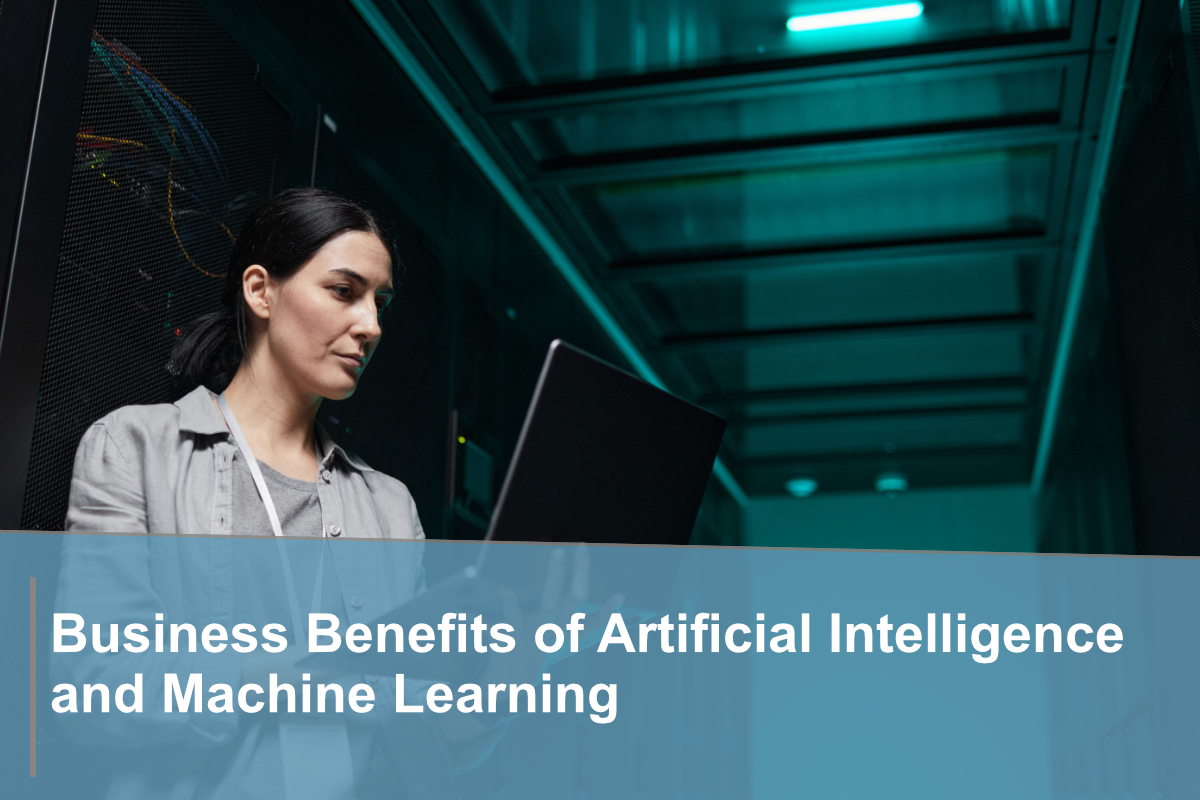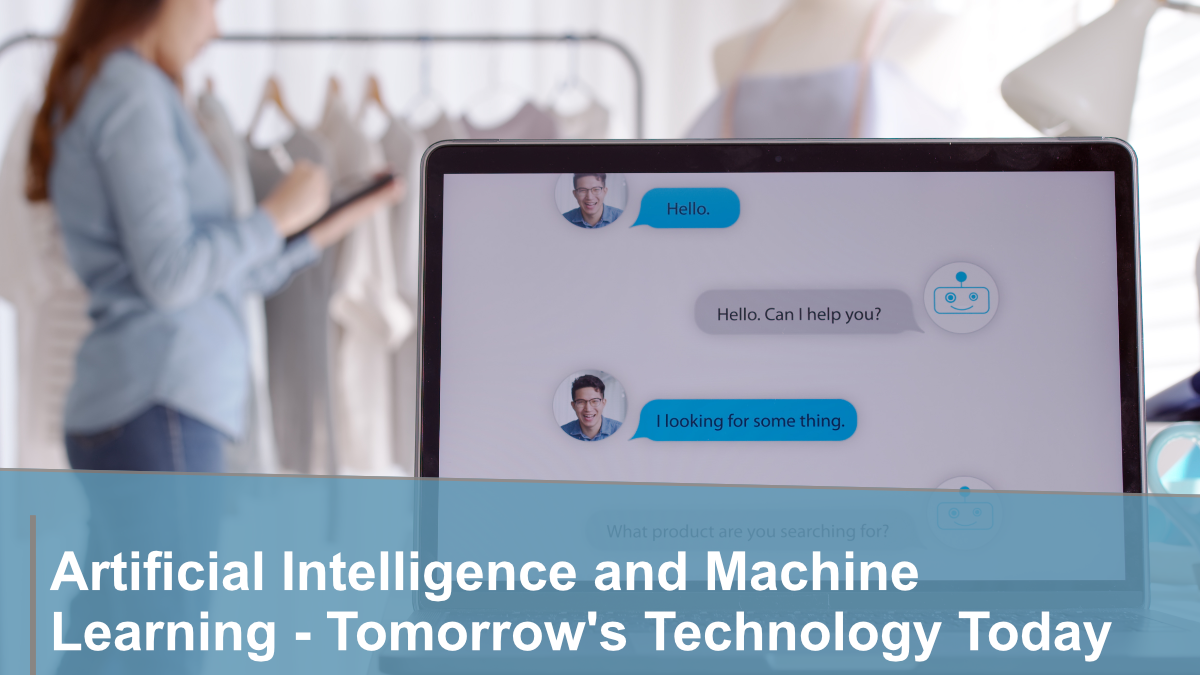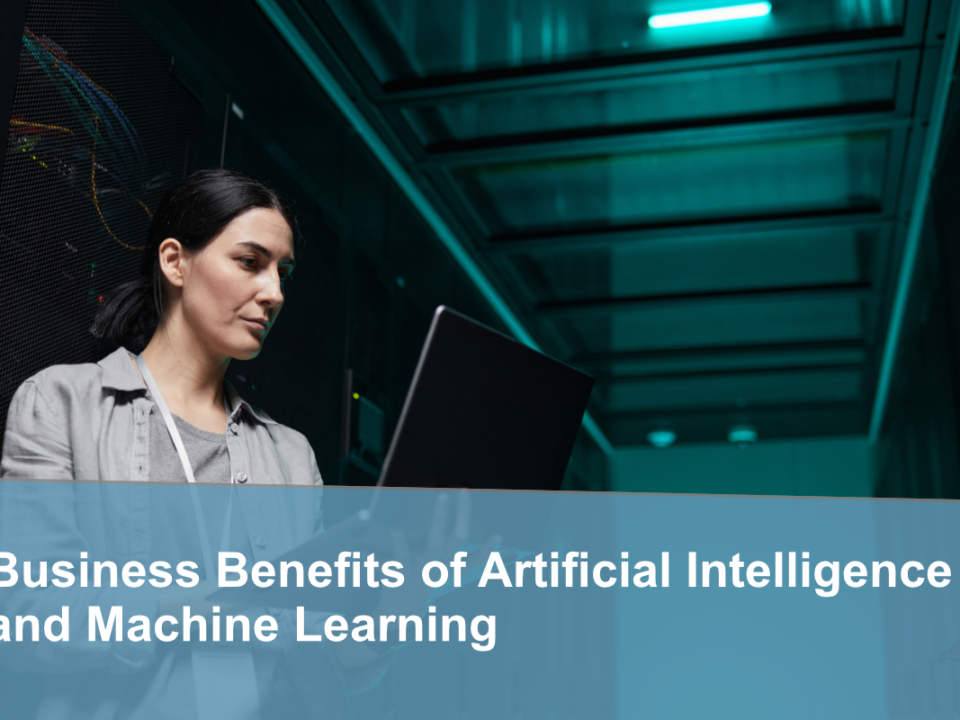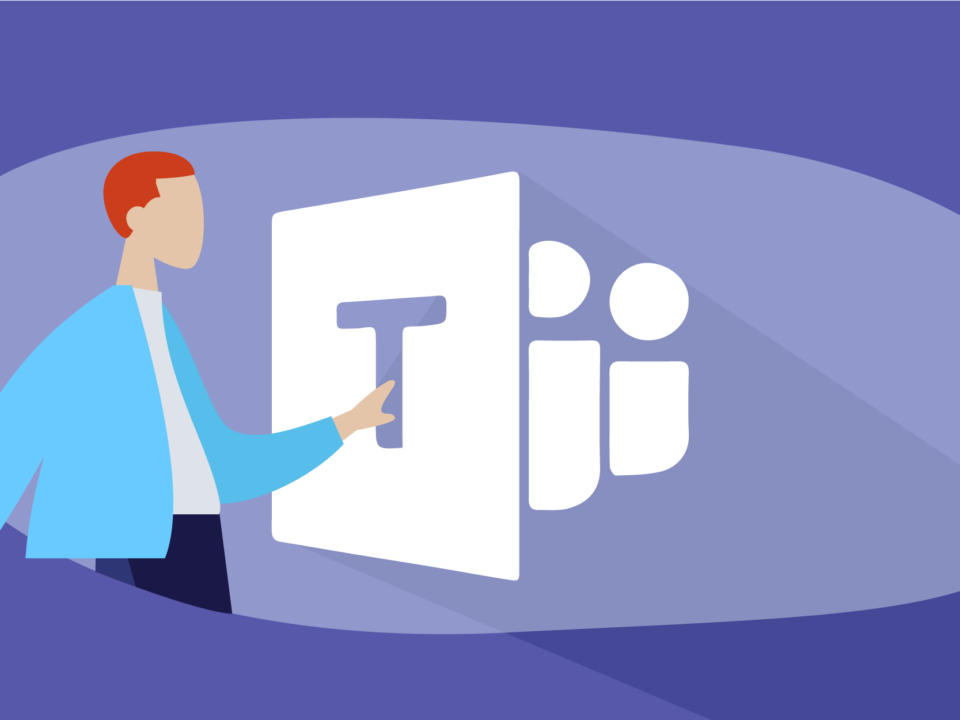
Outsourcing – Let Someone Else Take Care of Your IT, While You Focus On Your Business
8 August 2022
Business Benefits of Artificial Intelligence and Machine Learning
23 September 2022Over the past decade, “artificial intelligence” and “machine learning” have become common workplace buzzwords. The promise of productivity gains and an aura of science fiction combine in these cutting-edge workplace innovations, which inspire and intimidate in equal measure.
However, the reality is far less mysterious than the terms themselves, with both technologies already having profound effects on our lives. Among the most well-known applications of these technologies are grammar checkers, voice assistants, driving aids, speech recognition software, and email filtering. Future technological advancements will likely become far more prevalent as progress accelerates.
Artificial Intelligence (AI)
Artificial Intelligence can be defined simply as a computer program or machine that mimics human cognitive abilities. These abilities are characteristic of intelligent beings such as reasoning, solving problems independently, exercising independent judgement, and learning from previous experience.
Artificial intelligence differs from conventional computer programs in that it can make sense of and rationalise data that would be completely incomprehensible to traditional software. Traditionally, computer programs follow a defined set of rules, executing actions based on expected input variables. AI, on the other hand, can make sense of messy, imprecise data and make a judgement based on its experience.
Machine Learning
Machine learning is a sub-genre of artificial intelligence rather than a separate technology. It refers to the ability of software to detect patterns in data streams and adapt its actions accordingly with minimal outside interference. Using inputs such as sensors, cameras, or microphones, machine learning can be applied to pre-existing data (such as database information).
A machine learning algorithm becomes more adept at spotting trends and recognising commonalities as it is fed with data. To create software that could read speed limit signs, for example, you would feed image data from tens of thousands of signs to a machine learning algorithm. With more data processed, the algorithm would learn how to read signs based on common features and ignore irregularities – dirty, damaged or leaning signs would eventually be readable as it distinguished the important data from the background “noise.”
Machine Learning and A.I. – Friend or Foe?
While A.I and associated technologies are becoming increasingly popular in the business world, there is still a degree of hesitancy regarding their adoption. Some business leaders are concerned that A.I will depersonalise their businesses, eventually replacing humans with machines. There is a persistent belief among others that these technologies are only relevant to mega-corporations with big budgets, and that they cannot take advantage of the advantages that AI can provide.
Both assumptions are incorrect.
In our time, artificial intelligence and machine learning are thought of as the labour-saving devices. After steam and coal-power mechanised production, workers adapted to these new technologies and roles changed. A.I. and machine learning complement and support your team, not replace them.
New technologies can be applied to the most clunky and time-consuming data handling processes, freeing up staff hours for more value-adding activities. Despite the fact that background processes such as financial reporting, HR duties, and expense filing are crucial to many businesses, your clients are unaware of them, and they don’t receive any benefit from them. By doing so, your team will be able to invest more heavily in training and development, develop business strategies, and cultivate better relationships with clients and partners.
Although humans have their strengths, technology is simply better suited to certain tasks. Multiple actions can be carried out simultaneously by A.I programs, and data can be transferred in seconds instead of the minutes it might take for a human operator. Software programs perform workflows without error every time thanks to machine learning algorithms that identify discrepancies, errors, trends, and correlations in data.
Finally, while A.I. and machine learning used to be science fiction, they are now ubiquitous, and accessible to SMEs like never before. These tools will enable your organisation to stay ahead of the pack and give it a competitive advantage.
If you want to know more about how A.I and Machine Learning can help your business succeed, do not hesitate to contact us!
Bringing better IT to SMEs across the UK
CloudHost Limited was created with the mission to bring better IT support to small and midsize businesses across the UK. Backed by world-class technology, as well as a dedicated and knowledgeable support team, we allow organisations to build, deploy and maintain a feature rich IT environment. Contact us today to learn more.




